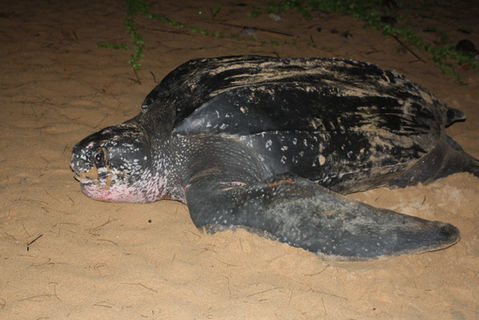YOU KNOW?
Marine turtles are a highly successful group of reptiles that have existed for over 100 million years, witnessing the fall of the dinosaurs. They evolved from large, land-dwelling tortoise-like ancestors and once thrived in vast numbers.
Structurally, marine turtles have a streamlined body suited for aquatic life. Their anatomy includes a head with a short neck, a pair of long fore-flippers for powerful swimming, short and rounded hind flippers used for steering, a tail, and a protective shell consisting of an upper carapace and lower plastron that encases their internal organs. Unlike tortoises and freshwater terrapins, sea turtles cannot retract their head and limbs into their shell. Instead of teeth, they have sharp, beak-like jaws adapted to crush, tear, or bite prey, with diet varying by species.
As reptiles, marine turtles regulate their body temperature by using the environment. To warm up, they often sunbathe at the water’s surface. They rely on lungs for breathing and surface about every 30 minutes to take a breath. Over millions of years, marine turtles have evolved to become highly adapted swimmers. Their muscular, oar-like fore-flippers provide speed and agility, while their rudder-like hind flippers assist in maneuvering. Their flattened, streamlined shells reduce water resistance, allowing them to move efficiently through the ocean.
With few exceptions, marine turtles spend their lives at sea. While females come ashore to nest, males almost never leave the ocean. In some regions, turtles can be seen sunbathing on beaches or rocks. However, this is not a common behavior in most populations of sea turtles. Most sea turtle species are highly migratory, traveling thousands of kilometers between nesting and feeding grounds. Despite these long journeys, females often return to the exact stretch of beach where they were born. Scientists believe they may navigate using the Earth’s magnetic field.
The lifespan of marine turtles is still uncertain, but many are believed to live over 80 years. Time to reach sexual maturity varies by species. Olive Ridley Turtles, the smallest species, take between seven and fifteen years to mature. Herbivorous Green Turtles may take up to fifty years, while Leatherback Turtles and other large species typically reach maturity in twenty to thirty years. Until they mature, it is difficult to distinguish males from females. Once mature, males develop long claws on their fore-flippers and a longer tail.
Today, seven marine turtle species remain, divided into two families: Cheloniidae and Dermochelyidae. All seven are threatened with extinction due to human activities, including habitat destruction, poaching, bycatch in fisheries, and climate change. Occasionally, hybrid and albino turtles are observed among populations, adding to the genetic diversity of these ancient mariners.

INCUBATION AND HATCHLING BEHAVIOR
Unlike crocodiles and some other reptiles, sea turtles do not care for their young. Once the eggs are deposited in the sand (about 45–75 cm deep), the female turtle leaves, and the nest is left to incubate naturally in the heat of the sun-warmed sand. The incubation period lasts approximately 60 days, after which the hatchlings begin breaking out of their shells and moving within the nest. Within two days, most of the eggs will have hatched. As the hatchlings move, their activity causes sand from the roof and sides of the nest to collapse, creating a platform that gradually rises. This "elevator-like" movement pushes the hatchlings closer to the surface until they emerge, typically at night when cooler temperatures and darkness provide some protection from predators.
This emergence is one of the most dangerous moments of a hatchling’s life. Many predators, including rats, crabs, birds, and dogs, threaten the hatchlings. Instinctively, the hatchlings immediately crawl toward the reflection of the moon and stars on the ocean. Even after reaching the water, the hatchlings face many threats. The nearshore waters are teeming with predators such as sharks, large fish, and seabirds. To increase their chances of survival, hatchlings engage in a behavior known as the "juvenile frenzy," swimming continuously for about 48 hours without feeding. Instead, they rely on the remaining yolk reserves in their stomachs for nutrition. This relentless swimming allows them to escape predator-rich coastal waters and reach open ocean currents, where they begin feeding on tiny floating sea organisms.
Little is known about the early years of their lives, often referred to as the "lost years." However, it is believed that upon reaching maturity, female turtles return to nest on the same beach where they hatched. Under natural conditions, the survival rate is remarkably low—with some conservationists estimating that only about one in a thousand hatchlings will reach adulthood and reproduce.





